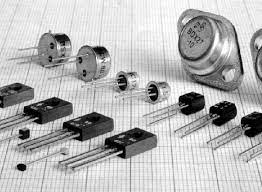
To begin Transistors explains the essential electrical component that changed technology. Many electronic devices depend on semiconductor transistors, which regulate current flow. This lesson covers transistor definition, importance, and types. Studying transistors will give students a firm basis in electronic principles and prepare them for advanced courses.
Define Transistors
Definition of Transistors describes these electronic devices’ key qualities. Transistors are semiconductor amplifiers and switches. Emitter, base, and collector layers of doped material govern electron and hole flow in the device. Transistors’ structure and behavior must be understood to understand their usefulness and uses in electrical circuits.

Transistor Importance in Electronics
Transistors are crucial to electronics. Technology has advanced communication networks, digital electronics, amplifiers, and switching circuits thanks to these tiny gadgets. Transistors are essential in modern electronics due to their high-speed switching, low power consumption, and small size. Transistors’ precision in amplification and control of electrical impulses has enabled the development of many electronic gadgets we use today.
Transistor Basics: Definition and Importance
World-powering transistors are small electronic components. They enable the digital age as circuit amplifiers and switches.
Transistors?
Silicon or germanium transistors enhance or switch electronic impulses. Bell Labs designed them in 1947 to replace vacuum tubes, revolutionizing electronics. Silicon transistors are a few nanometers long and most common today.
Why Transistors Matter
Transistors enabled contemporary electronics. They make up integrated circuits and microchips that power smartphones and spaceships. A few ways transistors affect us:
Fast digital circuitry and processing are enabled. Calculations in computers and other digital devices are fast due to transistor switching.
They shrink, speed up, and improve electronics. A device with thousands of tiny transistors can pack more computer power into less space.Communication technology have changed. Radios, mobile networks, and satellites need transistors.They enhance automation and control. Motor control, sensor, and other automated circuits use transistors.
Transistor Types
Bipolar junction transistors (BJTs) and field-effect transistors are the main types. BJTs are current-controlled, FETs voltage-controlled.Each transistor type has its own properties and uses. Most transistors are Bipolar Junction Transistors (BJTs), which increase current. Field-Effect Transistors (FETs) are used in digital circuits for voltage amplification. JFETs and MOSFETs are the two basic FET subtypes. Each transistor type has pros and cons, making it appropriate for various electronic applications.
Initial transistors were bipolar junction transistors (BJTs). They have emitter, base, and collector terminals.
FETs have source, gate, and drain connections. ICs and microchips use metal-oxide-semiconductor FETs (MOSFETs), the most prevalent transistors.New materials and designs could shrink, speed up, and improve transistors in the next decades. Continued transistor advancement will enable more powerful computing, AI, renewable energy, and other innovations that improve life on Earth. They’re little but powerful.
Transistors: Structure to Circuit Design
You must comprehend transistors’ internal structure to understand how they work. The emitter, base, and collector make up transistors. The emitter emits charge carriers, the base controls their flow, and the collector collects them.A modest base current regulates a greater emitter-collector current while the transistor is active. Amplification is essential for transistors in electrical circuits. Doping in emitter, base, and collector materials determines amplification. The transistor operates in the active area and achieves maximal amplification when properly biased by delivering DC voltages to the emitter, base, and collector.
Transistors
Transistors are common in amplifiers and switches. An amplifier amplifies input signals by applying them to the base, which regulates the output signal at the collector. Transistors can be digital solid-state switches. Without base current, the transistor is off. A current applied to the base turns on the transistor, allowing current from the emitter to the collector. This on/off state symbolizes binary digital logic’s 1s and 0s.
Transistors transformed electronics from 1947 until now. They are the foundation of modern integrated circuits and microchips. Transistors have become smaller, quicker, and more power efficient due to scaling and manufacturing breakthroughs. Future technologies like carbon nanotube transistors and quantum tunneling transistors may increase capabilities. Transistors have revolutionized electronics despite their small size.
Future Trends and Applications of the Ubiquitous Transistor
Nearly every modern electronic device uses transistors for computing, telecommunication, and consumer electronics. Their downsizing and integration into integrated circuits propelled the technological revolution of the last decades.
Consumer electronics and computing
Your device probably has millions of transistors. Microchips and microprocessors—the “brains” of computers, tablets, and smartphones—are made of them. Transistors process data by switching and amplifying signals. Devices grow more powerful and energy efficient with more transistors per chip.
Communications
Transistors enabled radio, television, and cellular networks. Transmitters and receivers process high-frequency signals with them. As transistors shrink, more can be combined into smaller radio frequency (RF) modules and antennas, allowing for smaller components with more functionality and range. This has spread Wi-Fi, Bluetooth, and GPS.
The Nano Future
Tinier and more powerful transistors are trending. Nanotechnology allows molecular transistors. Carbon nanotubes and graphene may enable transparent, flexible electronics. Although new, quantum computing promises almost unfathomable computational capacity using quantum bits or “qubits” made from quantum transistors.
Transistors have revolutionized our world in ways the early pioneers never dreamed thanks to advances in miniaturization, materials, and production. Computing, communications, and consumer tech will advance exponentially with the next transistor generation.

Leave a Reply